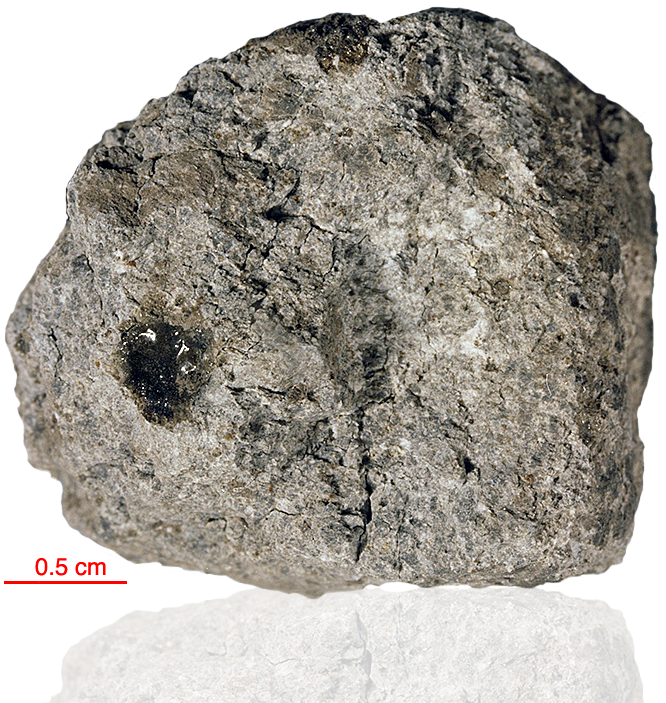
Fact sheet
65779 is a rake sample that is relatively similar to 65777, but it has a texture described as basaltic, rather than poikilitic. It contains clasts of plagioclase (see rotations), so it was a breccia before it crystallized. The melt part of this rock contains plagioclase needles about 0.05 mm long. Olivine and some pyroxene sub-ophitically enclose plagioclase, and there is an abundant dark glassy groundmass. Metallic iron and troilite are the main opaque minerals, although armalcolite, ilmenite and schreibersite are also reported.
The sample weighed 12.7 grams before analysis and has not been dated.
Further details of this and other Apollo samples are here: http://curator.jsc.nasa.gov/lunar/
The Apollo 16 landing site was in the hilly region around Descartes crater in the lunar highlands. The landing spot was chosen to allow the astronauts to gather geologically older lunar material (Descartes Formation and the Cayley Formation) than the samples obtained in the first four landings, which were in or near lunar maria.
The mission lasted 11.1 days, with a stay on the lunar surface of 71 hours. The crew were on the lunar surface for 20.2 hours during which they traversed approximately 27 kilometers and collected approximately 96 kilograms of samples.
Apollo 16 was launched on 16 April 1972.






